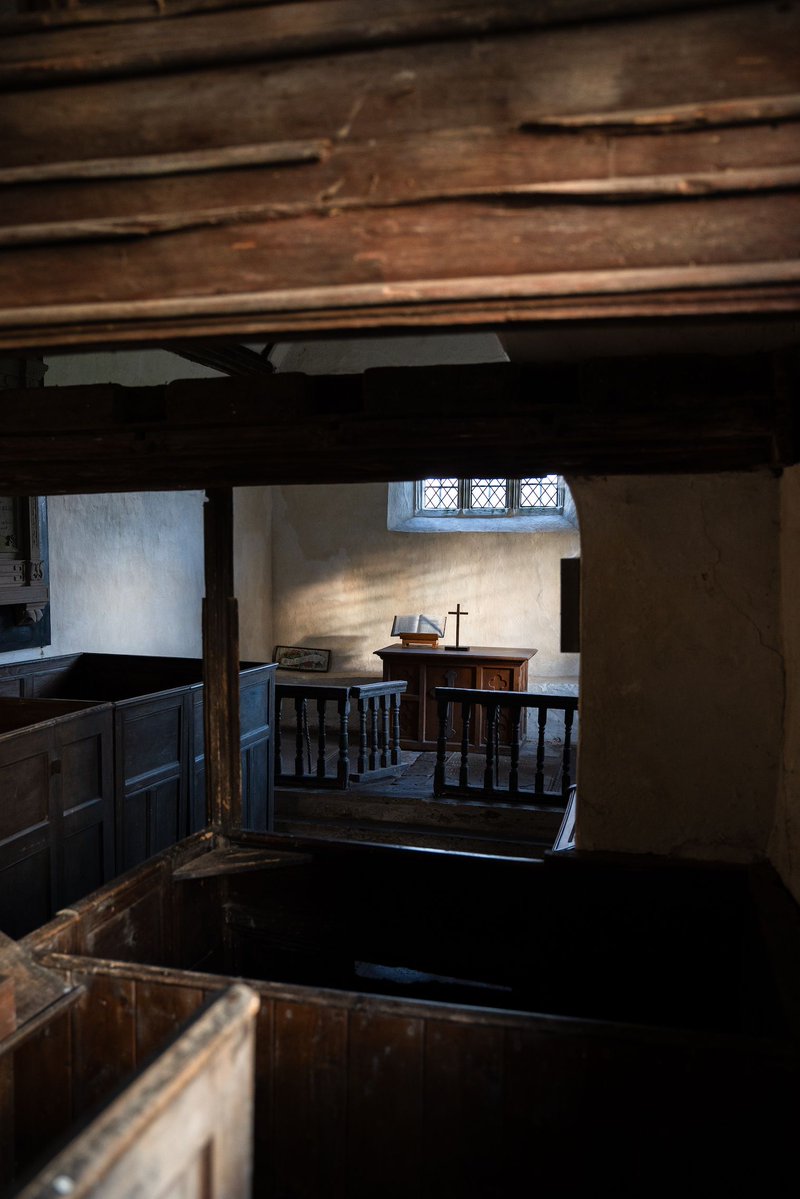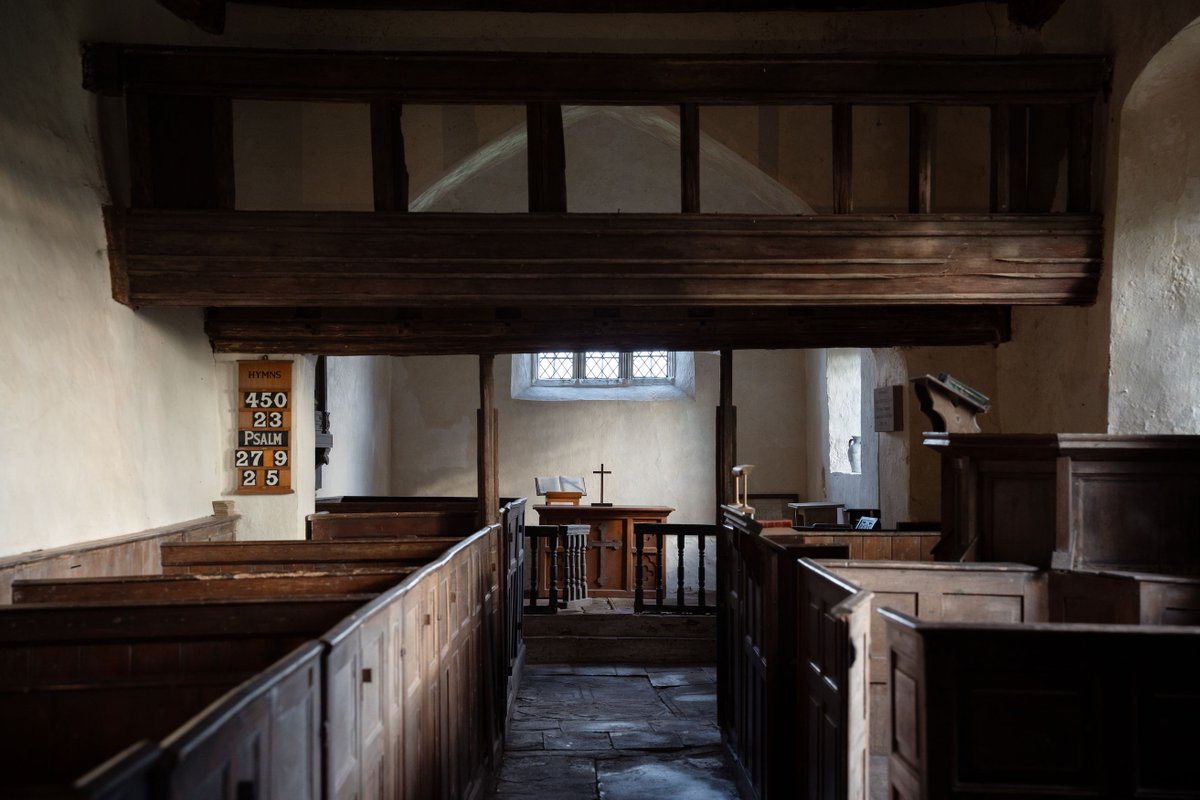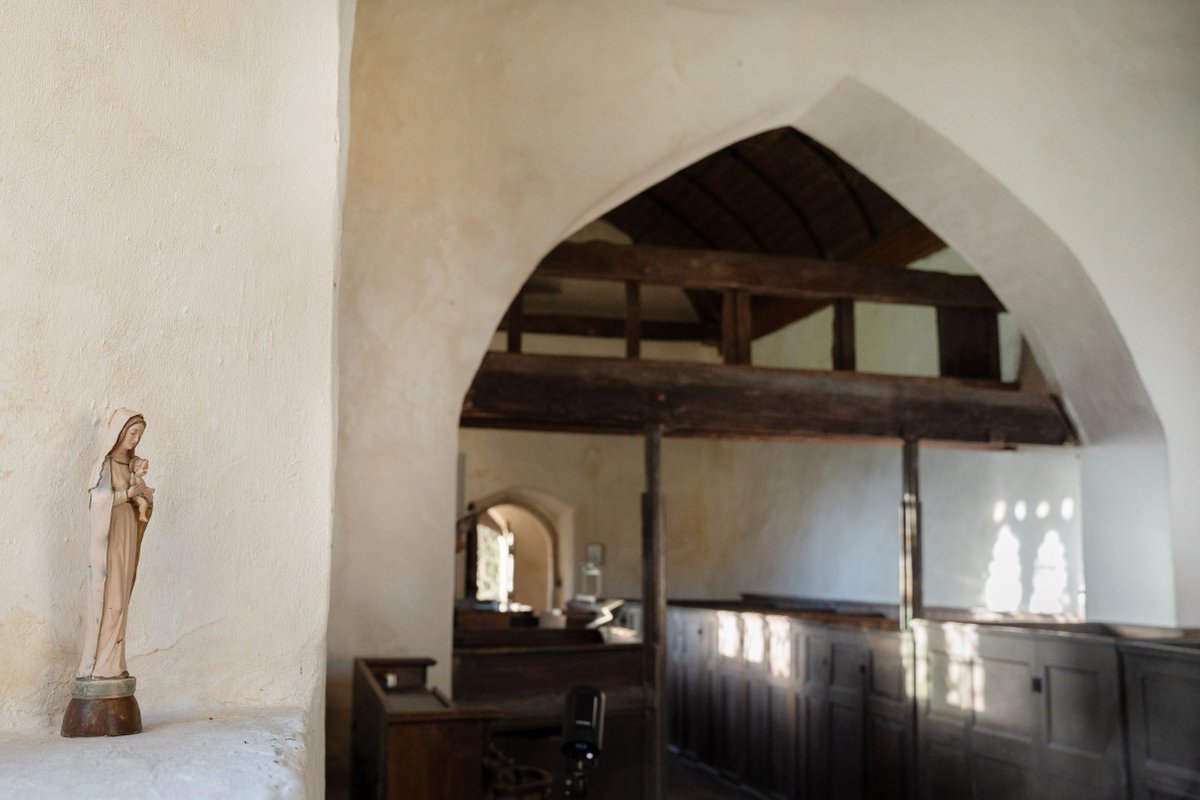Two gravestones side by side at Llanelieu, Powys commemorate nonagenarians who both 'departed this life in hope of a joyful resurrection' in the first quarter of the 18th century.
But they couldn't be more different …
But they couldn't be more different …
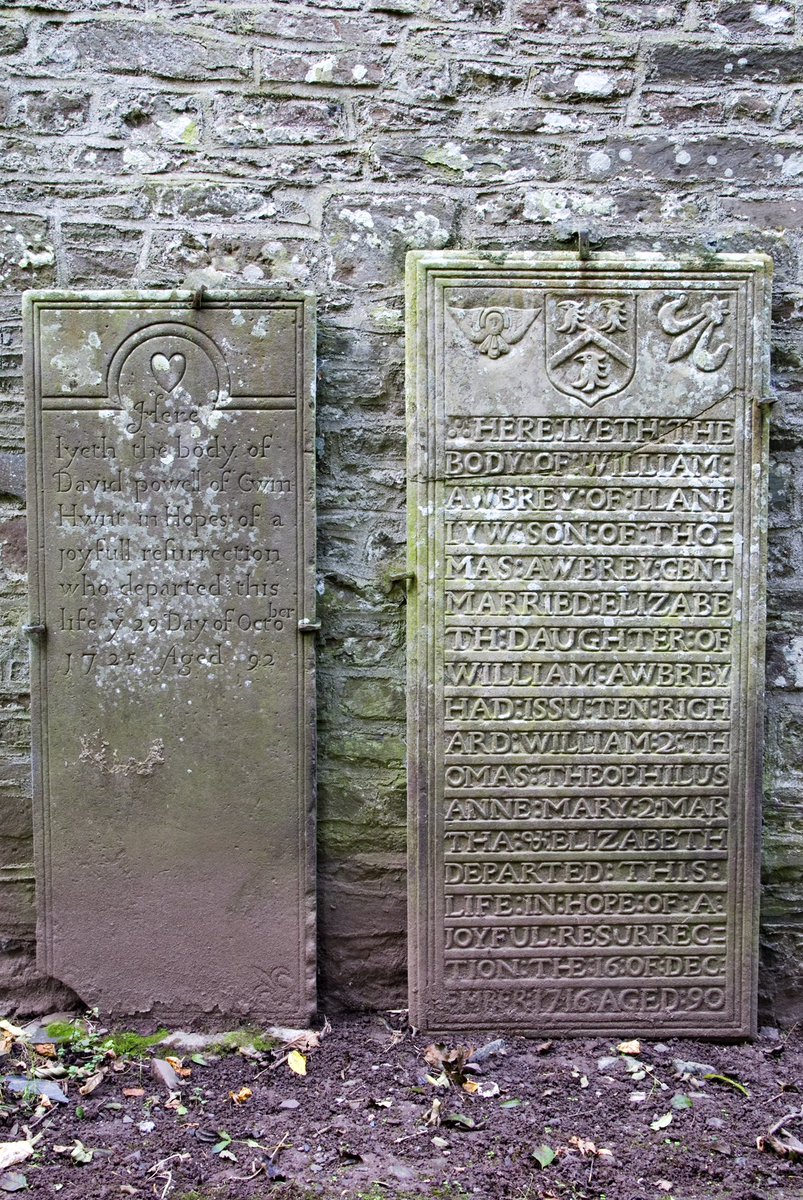
A simple, engraved stone with minimal inscription remembers David Powell of Cwm-Hwnt, who died in 1725 aged 92. 
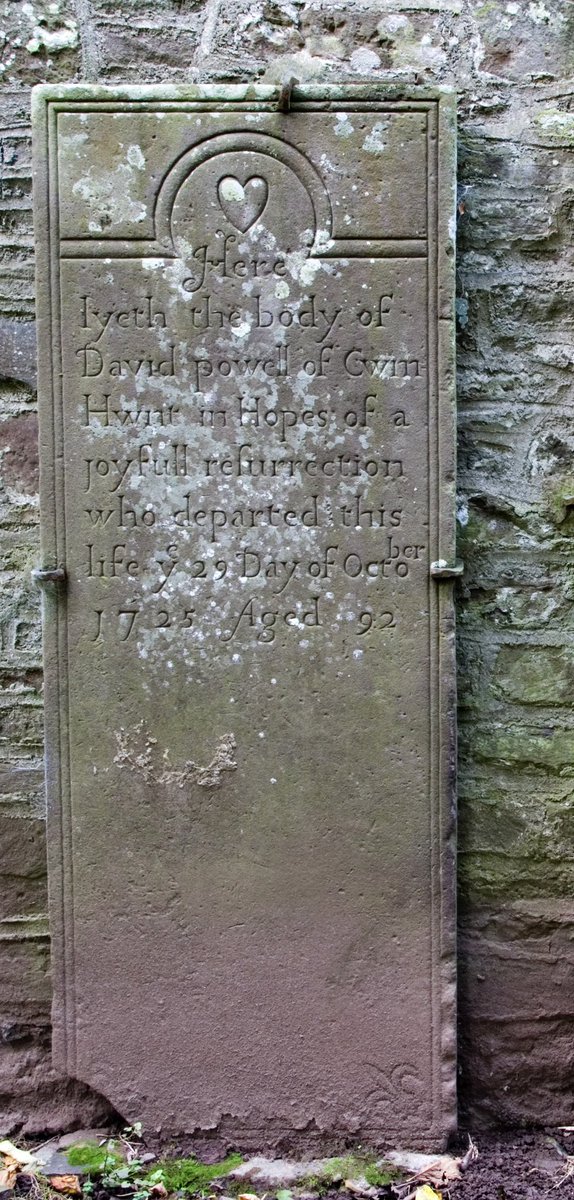
In contrast, the maximalist memorial to William Awbrey, topped with the Awbrey coat of arms, has been carved in relief from top to bottom, much like a printing press block. It’s not so much a tombstone, as a *tome* stone! 
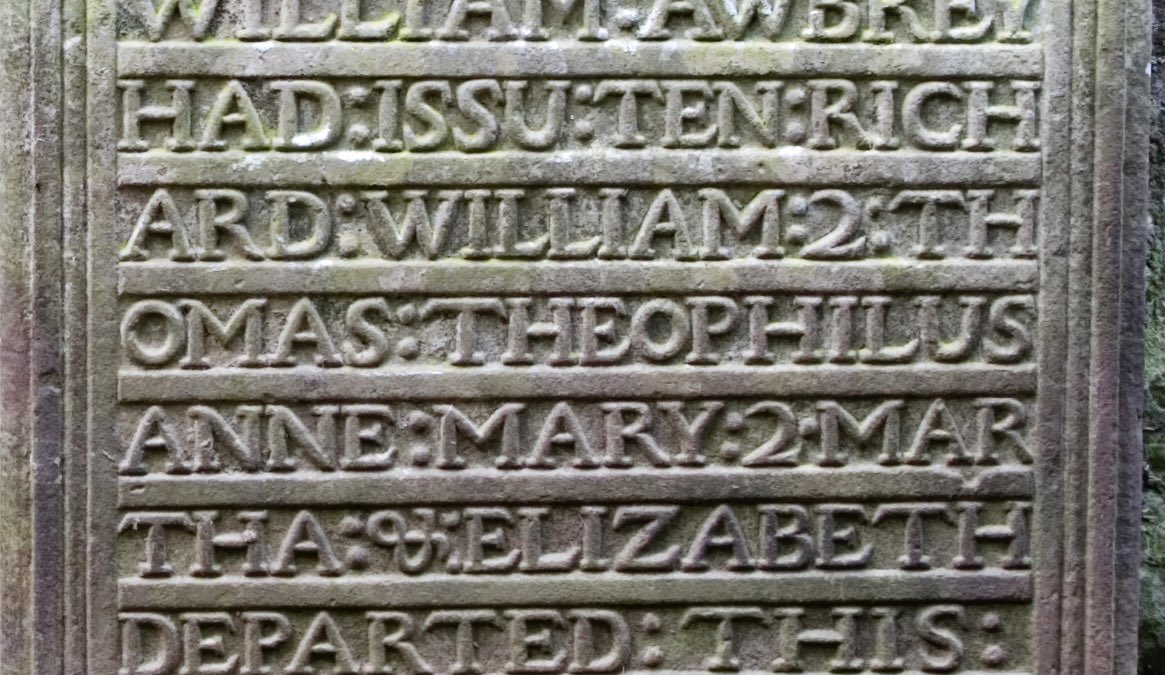
The words of the inscription — all caps — are indiscriminately broken over lines and SEPARA
TED:BY:COLONS.
We are informed that Awbrey, who died in 1716 aged 90, was the son of Thomas Awbrey, Gent and the husband of Elizabeth (daughter of William Awbrey).
TED:BY:COLONS.
We are informed that Awbrey, who died in 1716 aged 90, was the son of Thomas Awbrey, Gent and the husband of Elizabeth (daughter of William Awbrey).

He was also the father of TEN children: Richard, William, Theophilus, Anne, Mary, Elizabeth, two Thomases and two Marthas. 

This uncommon carving style can also be seen on the 1669 stone for four-year-old Thomas Awbrey (the first Thomas) which rests inside the church. At the base of that stone, beneath its raised rows of text, are some worn but intriguing symbols. 



There’s much more we could say about the Awbreys. William Jr. married Letitia Penn, daughter of William Penn — quaker & founder of Pennsylvania. The surviving Martha was also an early settler. Perhaps if William’s gravestone was bigger, his family would have mentioned this too!
• • •
Missing some Tweet in this thread? You can try to
force a refresh











